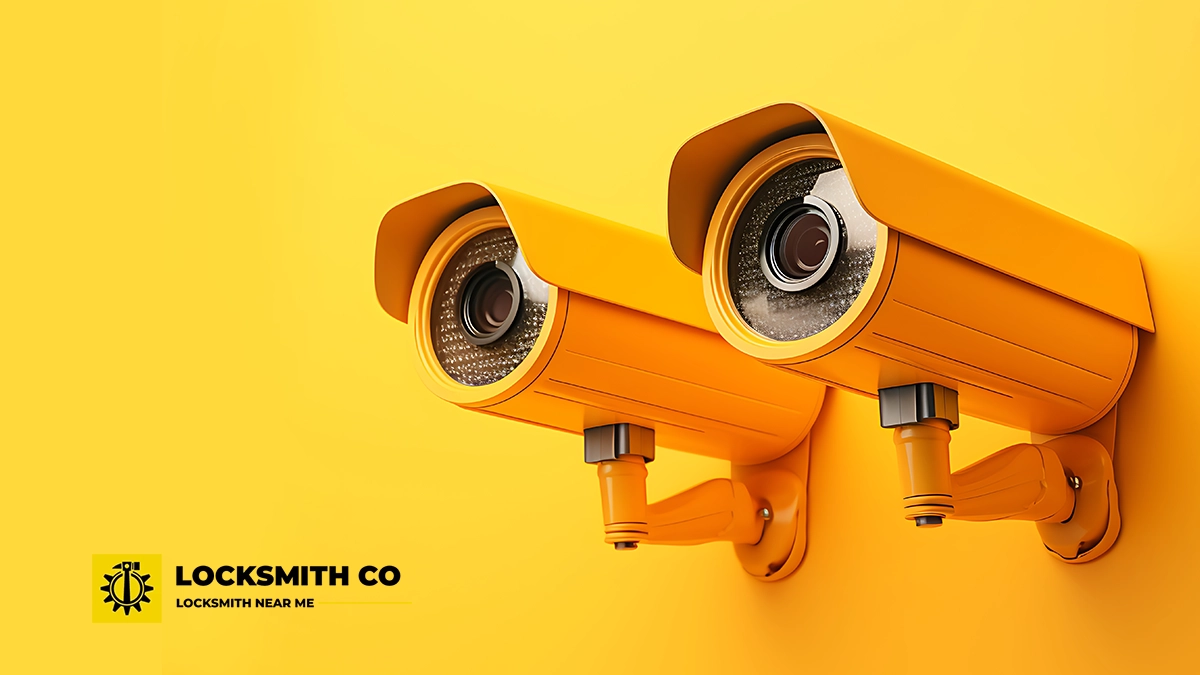Digital vs. Traditional Locks: Which Is Right for Your Property? As the landscape of security…
CCTV Systems and the Data Protection Act: A Guide for Businesses and Homeowners
CCTV systems and the data protection act: A guide for businesses and homeowners. Understanding the balance between enhanced security and privacy rights is essential for businesses and homeowners alike when considering CCTV systems.
The Data Protection Act plays a crucial role in ensuring that while these systems provide the desired security measures, they also respect individual privacy rights.
CCTV Systems and the Data Protection Act
This guide will delve into how CCTV systems can be effectively implemented while remaining compliant with the Data Protection Act.
We’ll cover essential aspects such as data collection limitations, proper signage requirements, and secure data storage compliance, alongside the importance of regular assessments to align your CCTV practices with legal standards.
By adhering to these CCTV guidelines, you can confidently enhance security without compromising on privacy.
Understanding CCTV Systems
Balancing Security and Privacy
Incorporating CCTV systems into your property requires careful consideration of both security needs and privacy rights.
For businesses and homeowners, the challenge lies in implementing security measures that deter crime while respecting the privacy of individuals.
The Data Protection Act mandates that the use of CCTV must be proportionate and necessary.
This means only collecting footage that is essential for the intended security purpose.
To achieve this balance, assess the areas that truly require monitoring and avoid unnecessary recording of private spaces.
Furthermore, ensure that your CCTV guidelines include clear signage requirements to inform individuals of surveillance.
This transparency fosters trust and reassures the public that their privacy is respected.
Regularly review your CCTV system’s operation to ensure it remains justified and compliant with data protection standards.
By striking the right balance, you can effectively use CCTV to enhance security without infringing on privacy rights.
Key Data Collection Considerations
When deploying CCTV systems, understanding the limitations of data collection is crucial.
The Data Protection Act requires that any data collected should be relevant and not excessive.
This means you must first identify the specific security needs of your property and ensure your CCTV system is tailored to meet those needs without overreaching.
Avoid capturing footage from neighbouring properties or public areas that do not require monitoring.
Additionally, it is important to consider how long you retain the collected data. Keeping footage for longer than necessary could breach data protection regulations.
Establish a clear retention policy that defines how long data is stored, ensuring it aligns with your security objectives and legal obligations.
Regular audits of the collected footage help maintain compliance and ensure that the CCTV system remains fit for purpose.
By focusing on these key considerations, you can uphold privacy rights while effectively using CCTV for security measures.
Importance of Regular Assessments
Regular assessments of your CCTV systems are vital to ensure ongoing compliance with the Data Protection Act.
These evaluations help ascertain whether your current practices align with legal standards and continue to meet your security requirements without infringing on privacy rights.
During assessments, review footage quality, check camera placement, and confirm signage visibility, ensuring all aspects meet both operational and legal criteria.
Additionally, assess if the data collection and storage policies remain relevant to your needs.
These assessments are an opportunity to update procedures and technology, addressing any potential vulnerabilities or inefficiencies.
By conducting periodic reviews, you stay abreast of changes in legislation and technology, allowing for necessary adjustments.
This proactive approach not only maintains data storage compliance but also strengthens your overall security measures, providing peace of mind to both the organisation and individuals affected by the surveillance.
Regular assessments thus play a crucial role in balancing security and privacy effectively.
Compliance with the Data Protection Act
Signage Requirements for CCTV
Proper signage is an integral part of compliance with the Data Protection Act when it comes to CCTV systems.
Signage serves to inform individuals that they are under surveillance, which is a legal requirement to ensure transparency and uphold privacy rights.
Signs must be clearly visible and positioned at the entrance to the monitored area, providing a fair chance for individuals to be aware of the surveillance.
The signage should include details such as the purpose of the CCTV, who is operating it, and contact information for further inquiries.
Ensuring this information is accessible helps build trust with the public by demonstrating that privacy is taken seriously.
Additionally, the signs should be designed to be easily readable from a distance and updated if any operational details change.
By adhering to these signage requirements, you not only ensure legal compliance but also promote transparency and trust with those potentially affected by your CCTV systems.
Ensuring Data Storage Compliance
Data storage compliance is a critical aspect of operating CCTV systems under the Data Protection Act.
To ensure compliance, it is essential to securely store recorded footage, protecting it from unauthorised access or breaches.
Implement robust security measures such as encryption and access controls to safeguard the data.
Only authorised personnel should have access to the stored footage, and their access should be regularly reviewed and updated as necessary.
Establish clear procedures for handling and disposing of data once it is no longer required, ensuring it is permanently deleted and cannot be retrieved.
Additionally, maintain detailed records of who accesses the data and for what purpose, providing accountability and traceability.
Regularly audit your data storage practices to ensure they remain compliant and effective.
By prioritising secure data storage and compliance, you not only adhere to legal requirements but also protect the privacy rights of those captured by your CCTV systems.
Aligning Practices with Legal Standards
Aligning your CCTV practices with legal standards is essential to ensure compliance with the Data Protection Act.
Begin by conducting a comprehensive assessment of your current CCTV operations, identifying areas that may require adjustments to meet legal obligations.
Develop a clear policy that outlines the purpose of CCTV usage, detailing what data is collected, how it is used, and who has access.
Regular training for staff involved in operating CCTV systems is crucial, ensuring they understand both the practical and legal aspects of surveillance.
Keep abreast of any changes in data protection laws that could impact CCTV operations, and adjust your practices accordingly.
Documentation is key, so maintain records of all procedures and policies related to your CCTV system.
This not only aids in compliance but also demonstrates your commitment to protecting privacy rights.
By aligning your practices with legal standards, you can effectively use CCTV systems while respecting individual privacy and maintaining trust.




Comments (0)